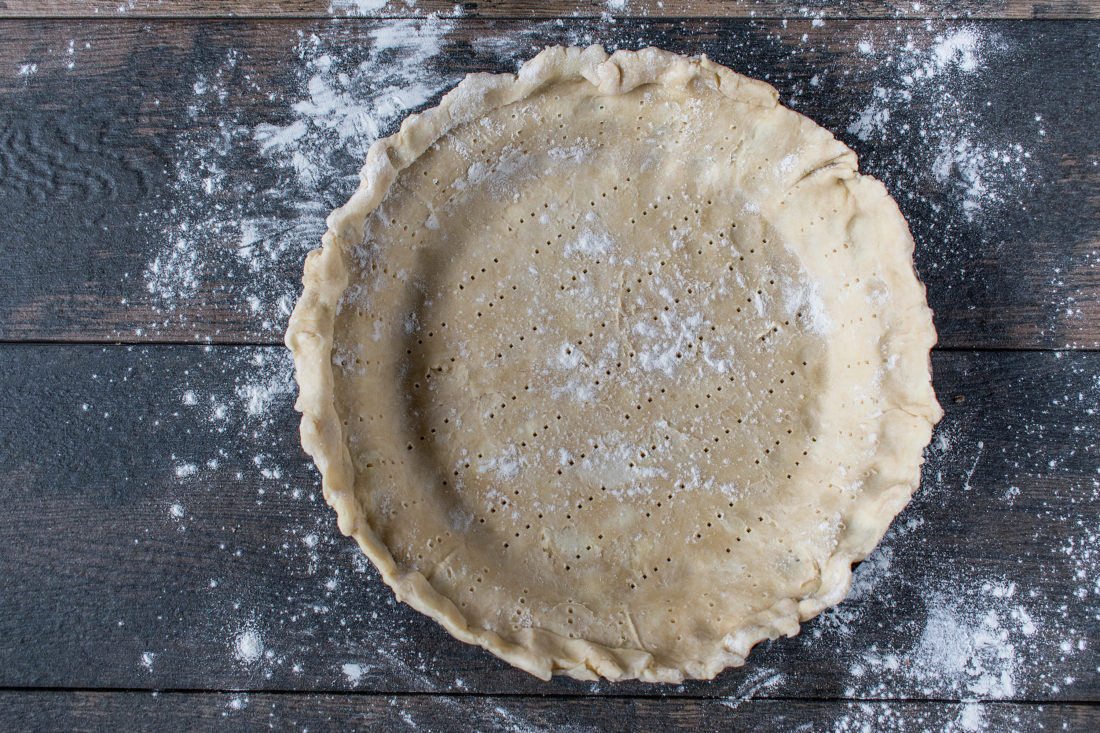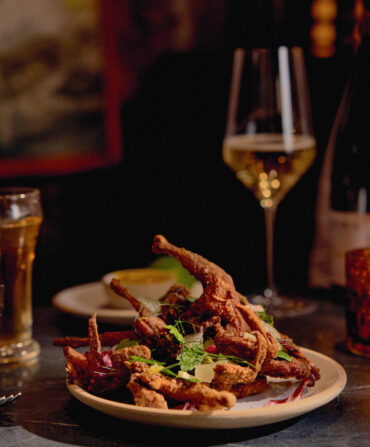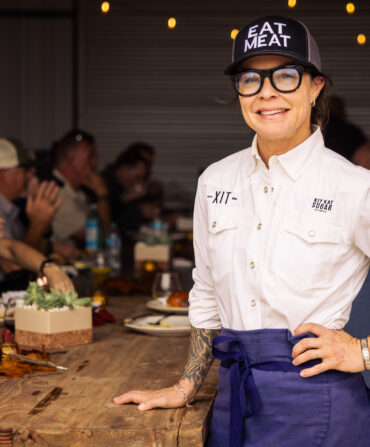In the South, pie is the Thanksgiving pièce de résistance (apologies to the bird). And this year, smaller family gatherings and a shuffling of duties means plenty of pie crust rookies are stepping up to the rolling pin. In theory, the crust is simple; it’s just fat, flour, water, and a little salt. But anyone who’s ever tried to make one knows things can get tough (literally) quickly. To truly nail a buttery, flaky crust, you’ll need the right tools—and to follow a few rules from the pie pros. Take their advice, and your Turkey Day team will be very thankful indeed.
Step 1: Ready Your Tools
A pastry blender is a must. “It’s the most powerful tool for incorporating the fat (butter) into the flour,” says Amanda Wilbanks, founder of the Southern Baked Pie Company.
Though your hands—or a whirl in the food processor—will work, too. “Your hands are your best tool,” says Kaley Laird, executive pastry chef at Rhubarb, the Rhu, and Benne on Eagle in Asheville, North Carolina. “If your butter is too cold for that, use a food processor to blitz the butter into the dough.”
Go big on the bowl. “I also think a big mixing bowl is essential—bigger than what you think you’ll need,” Wilbanks says. “The bigger the bowl, the less likely the flour will end up all over the countertops. I love big stainless mixing bowls because they are lightweight and easy to clean.”
Consider a deep dish. “We bake our pies in nine-inch cake tins so that they can be nice and tall (I love a tall pie),” says Greer Gilchrist, chef and co-owner of Habringer Cafe and Bakery, and Harken Cafe in Charleston, South Carolina. “But keep it easy. I believe the less you fuss, the better it will be and the more you will enjoy yourself. As a general rule I keep kitchen equipment minimal—in my house and the bakeries.”
Roll with a winning pin. “Use a straight pin,” Laird says, because the style offers a uniform thickness throughout and no handles. “It allows you to use your forearms while rolling and to disperse your upper body [strength].”
Step 2: Pick Your Fat
Stay classic with butter. “I love butter because I think it tastes better than shortening and lard,” Wilbanks says. “There are many critics who say rendered lard is the best, but I’ve always stayed true to my first love—butter.”
Consider lard if you’re willing to take a risk. “Butter is easiest to keep cold yet pliable, and you don’t have to worry about people being uncomfortable with other animal fats,” Laird says. “I disagree with shortening as a concept in general, but if you aren’t afraid of lard, it will give a depth of flavor and a nice flaky crust.”
Mix it up for easy mixin’. “I prefer a mixture of butter and shortening,” says Kim Vickers, the pastry chef at Dough in Tampa, Florida. “Shortening incorporates into the dough easier and butter gives it the taste and flakiness.”
Step 3: Master the Blend
Cold + chunky = flaky. “You want your butter to be very cold, as well as your water—don’t skimp on the temperature here,” Laird says. “Start cold, end cold, and keep the dough cold. You want cold butter in large cubes, and then you want to keep them pea-sized when mixing. When you add your water, you also want that ice cold, and you don’t ever want to add more than what you need.”
Go easy mixing the butter into the flour. “Make sure to leave butter in pea-size pieces before adding the water,” Wilbanks says. “These little pieces of butter will release moisture as the pie crust bakes, and therefore create little perfect pockets of air in the crust. This is what leads to a flaky crust.”
Don’t overwork the dough. “I think using your hands and a pastry blender is the easiest way to ensure a tender, flaky crust is achieved,” says Wilbanks. “Food processors are a great tool, but it took me a lot of practice with using one, and a lot of wasted butter and flour, before I figured out that my dough was tough because the food processor was over working it.”
Make sure there aren’t any dry spots. “If it’s crumbly, your hydration ratio may have been off, or you undermixed the dough,” Laird says.“You want to mix it enough that there aren’t dry pieces, but if you continue to mix and it’s still dry, you may not have added enough water.” Gilchrist suggests, in this case, to add water a teaspoon at a time until the dough is just pliable enough to roll out.
Step 4: Rest and Roll
Be patient. “I think resting the dough for two hours is key,” Wilbanks says, and do so in the fridge so the ingredients stay cold. “If you make the dough and roll it quickly, the dough is often sticky and very stretchy. This can lead to a tough crust.”
Go easy on the flour when you roll. “You need to use enough dusting flour to make everything easy, but not too much,” Laird says. “Leftover flour on the dough will bake that way, and you will always have that dusty, dry, raw flour taste.”
Roll with confidence. “Be an assertive roller—use those muscles and make each roll count,” Gilchrist says. “I start in the middle and apply even force as I roll out. The fewer rolls, the less you’ll warm up your dough, and the less you’ll overwork it. Put your Thanksgiving weight into it and just give it a few good rolls. Don’t fuss with it.
Keep it clean. “My mother-in-law, Sandy Wilbanks, taught me to roll my disks of dough between two pieces of parchment,” Wilbanks says. “This keeps you from making a big mess in the kitchen by flouring the counters.”
Step 5: Go for Gold
Parbake the crust. “If the directions call for the pie to bake less than forty minutes, I always parbake the crust,” Wilbanks says. “Then I fill with the filling and bake however long the recipe says. This helps ensure a golden-brown crust is achieved.”
Time it right. “To achieve an evenly baked crust, I parbake my crust for 15 minutes at 350 degrees prior to the bake time of the pie,” Vickers says.
Rotate halfway through. “We do this with everything at the bakeries,” Gilchrist says. “All ovens are hotter in the back then in front. We rotate everything halfway through for an even bake.”
Click here for a simple-yet-perfect pie crust recipe.
Also read: Simple secrets for making great gravy









